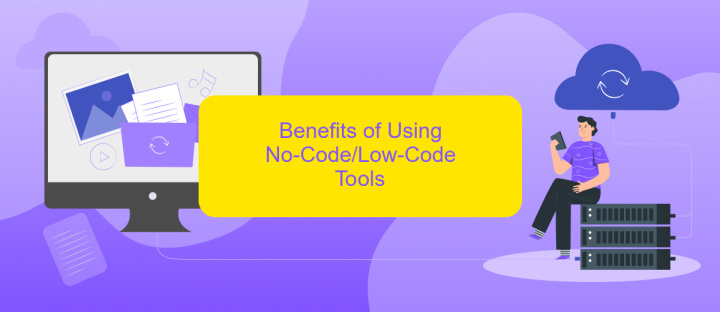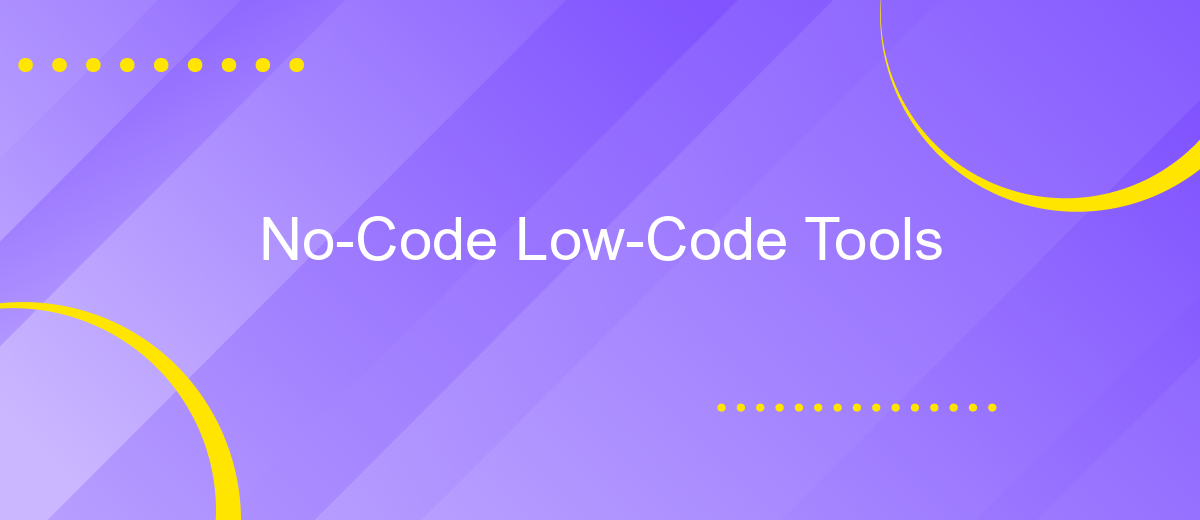No-Code Low-Code Tools
In today's rapidly evolving digital landscape, No-Code and Low-Code tools are revolutionizing the way businesses and individuals develop software. These platforms enable users to create applications with minimal or no coding knowledge, accelerating innovation and reducing development costs. This article explores the benefits, key players, and future potential of No-Code and Low-Code solutions in transforming the tech industry.
Introduction
No-Code and Low-Code tools have revolutionized the way businesses and individuals approach software development. These platforms enable users to create applications, automate workflows, and integrate systems without the need for extensive programming knowledge. This democratization of technology allows for faster innovation and more efficient problem-solving.
- Accelerated development cycles
- Reduced dependency on IT departments
- Cost-effective solutions
- Enhanced collaboration between technical and non-technical teams
One of the key advantages of No-Code and Low-Code tools is their ability to streamline integrations. Services like ApiX-Drive make it easy to connect various applications and automate data flows, further simplifying complex processes. With these tools, organizations can focus on strategic initiatives rather than getting bogged down by technical challenges.
What Are No-Code/Low-Code Tools?

No-code and low-code tools are platforms that allow users to create applications with minimal or no coding knowledge. These tools provide a visual interface where users can drag and drop components to build software, making development accessible to non-programmers. They are designed to simplify and accelerate the development process, enabling businesses to quickly adapt to market demands and innovate without relying heavily on traditional coding methods.
One of the significant advantages of no-code/low-code tools is their ability to integrate various services seamlessly. For instance, ApiX-Drive is a service that facilitates easy integration between different applications, allowing users to automate workflows without writing code. By using such tools, businesses can streamline operations, reduce development costs, and empower non-technical staff to contribute to digital transformation initiatives. These platforms are particularly useful for small to medium-sized enterprises looking to stay competitive in a fast-paced digital landscape.
Benefits of Using No-Code/Low-Code Tools

No-Code/Low-Code tools offer a range of benefits that empower both technical and non-technical users to build applications efficiently. These platforms democratize software development, making it accessible to a broader audience and enabling faster innovation.
- Speed and Efficiency: These tools significantly reduce development time, allowing for rapid prototyping and quicker time-to-market.
- Cost-Effective: By minimizing the need for extensive coding expertise, businesses can save on hiring specialized developers.
- Flexibility: Users can easily customize and update applications to meet evolving business needs.
- Integration Capabilities: Services like ApiX-Drive facilitate seamless integration with various platforms, streamlining workflows and improving data synchronization.
- Empowerment: Non-technical staff can contribute to digital transformation initiatives, fostering a culture of innovation within the organization.
Overall, No-Code/Low-Code tools bridge the gap between business requirements and technical execution, enabling organizations to stay competitive in a fast-paced digital landscape. By leveraging these platforms, companies can accelerate their development processes, reduce costs, and foster a more inclusive and innovative working environment.
Challenges and Limitations of No-Code/Low-Code Tools

No-code and low-code tools offer numerous advantages, but they also come with their own set of challenges and limitations. One significant issue is the lack of customization options. While these tools provide a broad range of functionalities, they often fall short when it comes to specific, complex requirements that businesses may have.
Another challenge is the scalability of applications built using no-code/low-code platforms. As the needs of a business grow, these tools may struggle to keep up with the increasing complexity and volume of data. Additionally, there can be concerns related to security and compliance, as these platforms may not always meet the stringent standards required by certain industries.
- Limited customization options
- Scalability issues
- Security and compliance concerns
- Dependency on the platform provider
Despite these challenges, no-code and low-code tools remain a valuable asset for many businesses. Services like ApiX-Drive can help mitigate some of these limitations by offering robust integration solutions, allowing users to connect various applications seamlessly and automate workflows more efficiently.
- Automate the work of an online store or landing
- Empower through integration
- Don't spend money on programmers and integrators
- Save time by automating routine tasks
Conclusion
No-Code and Low-Code tools have revolutionized the way businesses and individuals approach software development, making it accessible to a broader audience. These platforms empower users to create sophisticated applications without the need for extensive coding knowledge, significantly reducing development time and costs. As the demand for rapid digital transformation grows, the adoption of these tools is expected to increase, driving innovation and efficiency across various industries.
Moreover, integrating these tools with other services can further enhance their functionality. For instance, ApiX-Drive offers seamless integration capabilities, enabling users to connect their No-Code and Low-Code applications with a wide range of external systems and services. This not only streamlines workflows but also ensures data consistency and operational efficiency. As technology continues to evolve, the synergy between No-Code/Low-Code platforms and integration services like ApiX-Drive will play a crucial role in shaping the future of software development.
FAQ
What are No-Code and Low-Code tools?
Who can benefit from using No-Code and Low-Code tools?
What kind of applications can be built using No-Code and Low-Code tools?
How do No-Code and Low-Code tools handle automation and integrations?
Are No-Code and Low-Code tools secure and scalable?
Apix-Drive will help optimize business processes, save you from a lot of routine tasks and unnecessary costs for automation, attracting additional specialists. Try setting up a free test connection with ApiX-Drive and see for yourself. Now you have to think about where to invest the freed time and money!


